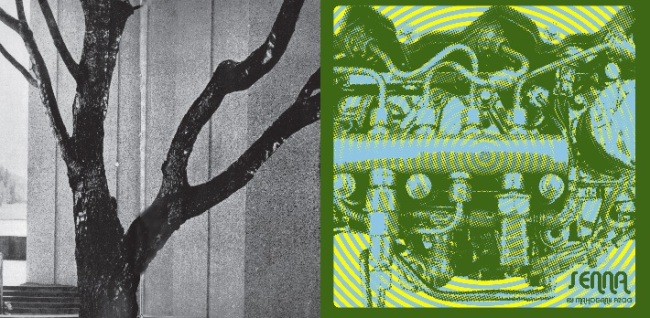MUSKAP, UPRIGHT AT THE END OF LIPPESTAD (Prisma Records)
Philosopher Lao Tzu stated that “Life is a series of natural and spontaneous changes.” Using spontaneous music as a representative paradigm for life, the trio known as Muskap worked to create an intuitive music that was free from form and clichés. Deeply influenced by Karlheinz Stockhausen and his “Aus den Sieben Tagen,” Muskap’s sound draws from the experiences of life to create a conversational setting where three instrumentalists are free to discover human relationships on a new level. Although the liner notes give much of the inspirational credit to Stockhausen, it is Stockhausen’s mentor, Olivier Messiaen, whose influence can be clearly heard on these recordings. The rhythmic intricacies and birdsongs of Messiaen psychologically seep into the conceptual language of these musicians.
The first important strength of these recordings is the abundance of variety. Often, pure improvisation can sound like a random jumble of sound, but Muskap is careful to vary the theoretical model for each performance. “Violet” begins as a commotion of noise but gradually moves into melodic brilliance as each instrument finds its place in the order. The title, “Marche Militaire,” perfectly describes the jovial, dance-like presentation of another performance. The highlight of the recording comes from Doucet’s flute and piccolo mastery. Of all of the musicians, Doucet seems to have a largest penchant for this type of musical setting.
Each of these performances was recorded in July of 1976 and is just now being released to the public 36 years after the recording took place. Muskap stands as one of Norway’s earliest ensembles to explore this type of extemporaneous music-making. Spontaneity can be a double-edged sword. As Olav Thommessen’s liner notes state, “Occasionally, a musical situation emerges where nothing happens of much interest…This record is proof of what can emerge when things do go right!”
MAHOGANY FROG, SENNA (MJR048)
What do you get when cross the electronic sounds of a rave, the rock sounds of an arena, and the indie-beat of the underground? You get Mahagony Frog. Senna, their new album, was released on September 18, 2012, just before their Canadian tour. Please tip your hat to this album’s recording engineer John Paul Peters and mastering engineer Troy Glessner. Although Mahagony Frog is known for their superior production and album quality, this latest release raises the bar again.
The sound-warps created on this album are drenched with wet effects and drip with saturated electronic sounds that span the frequency range of the speakers they come out of. The compositions are formally somewhat similar. They usually begin and end with some sort of effect-laden sound manipulation. But the middle or crux of each composition is unique onto itself. The electronica beats of “Houndstooth Part 1” are contrasted by the pounding toms and punk-rock drum-fills of “Houndstooth Part 2.” The heavy organ sounds mix into a well of synthesized richness. The intervallic, dual melody on “Expo ’67” suggests the music of the 1980s besides the title’s reference to the 1960s. Although it is easy to throw an ambiguous word like “indie” around, the band’s influences break from this and clearly cross boundaries into the metal and the rock-guitar reverberations of the 1970s.
The palette of effects ranges from the common flanger (used on “Flossing With Buddha”) to a wide range of cymbal scrapes, low drones, delayed crackling, and other idiosyncratic sounds of the digital age. It should be noted that the assortment of timbres is largely created by the combining of instruments from manufacturers such as Moog, Korg, Farfisa, and others. On the surface, the compositions may seem simple, or perhaps a little superficial, but upon deeper listening there are many resonances buried in the simple progressions that can only be identified upon repeated hearings. The final offering of “Aqua Love Ice Cream Delivery Service” serves up a 21st Century soundscape that blasts into the future before a final harpsichord slows the album to an end in the abysmal past.

